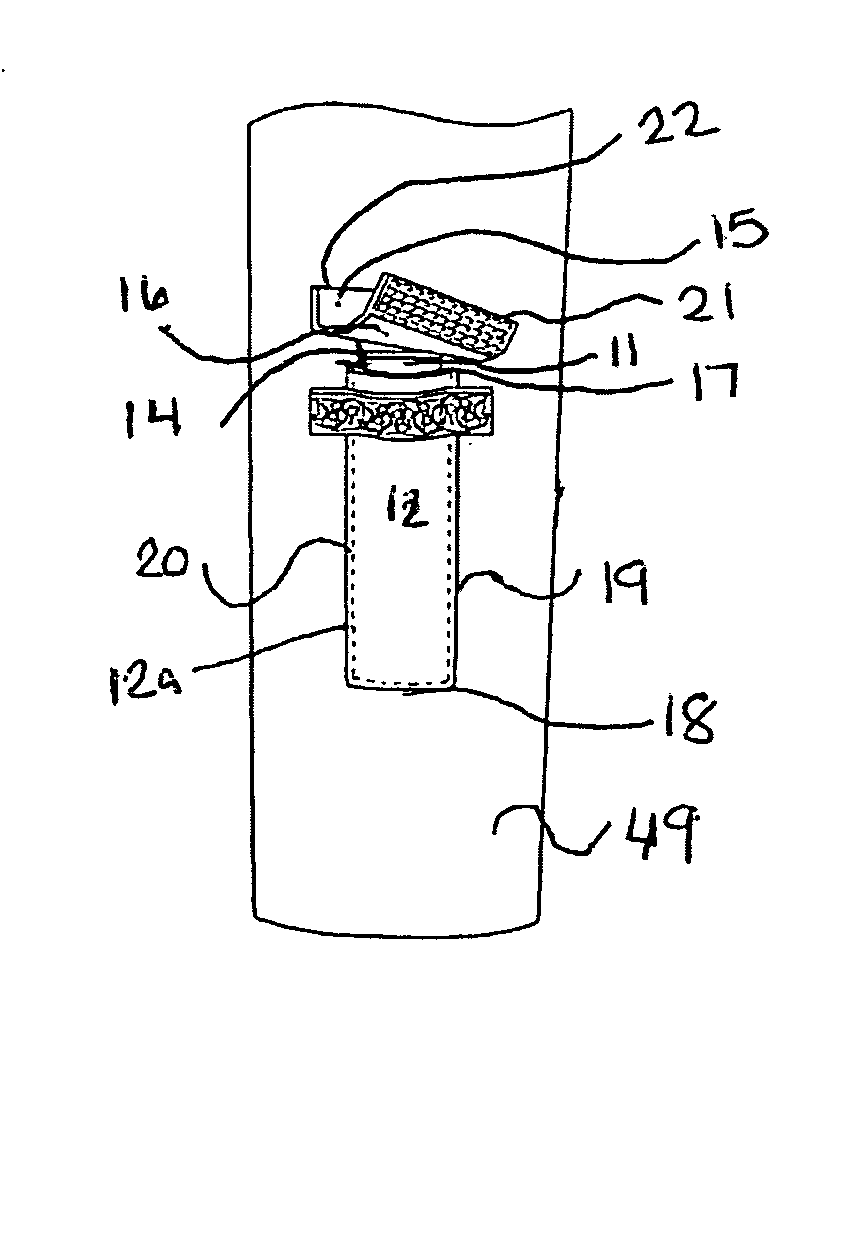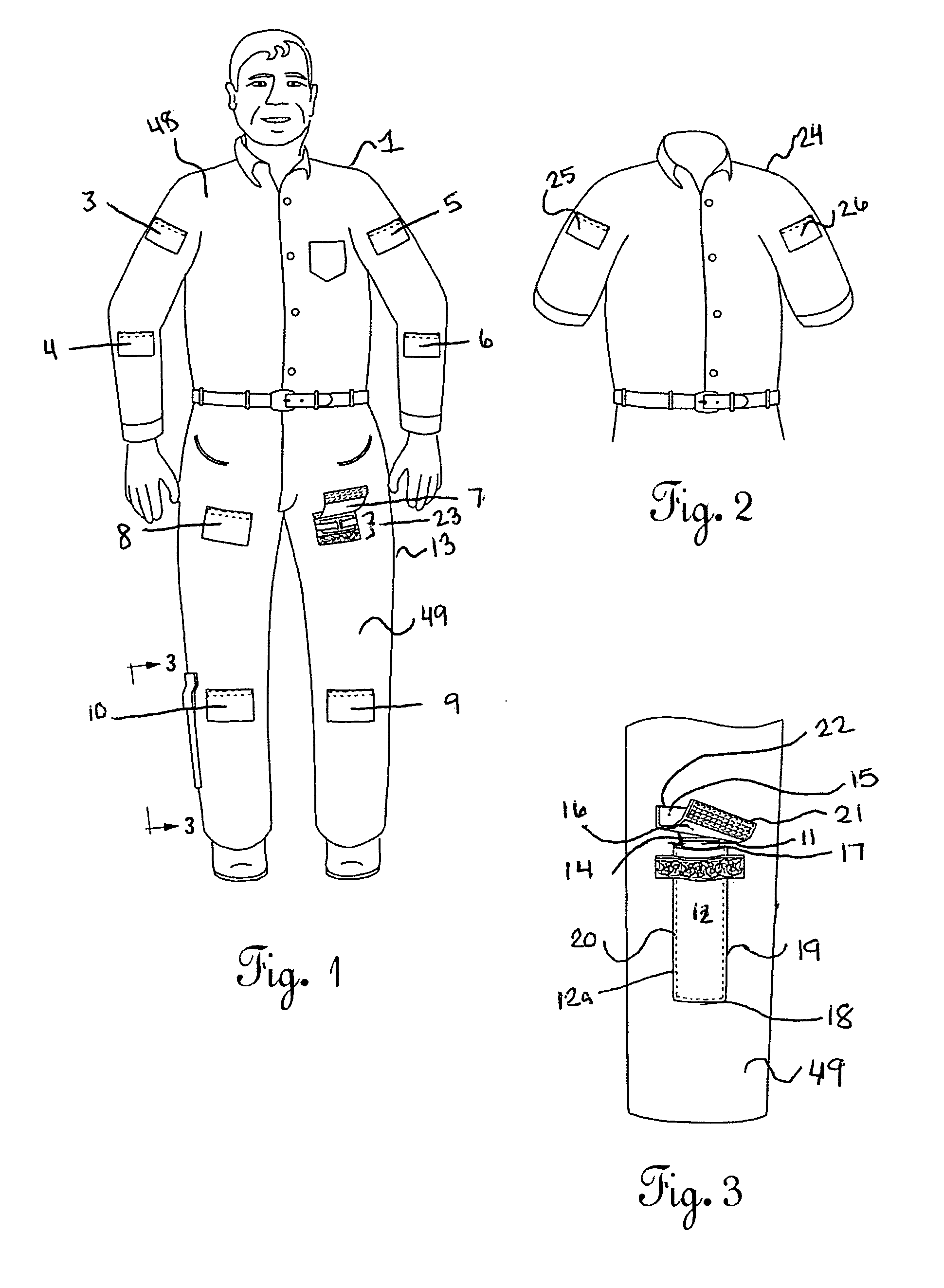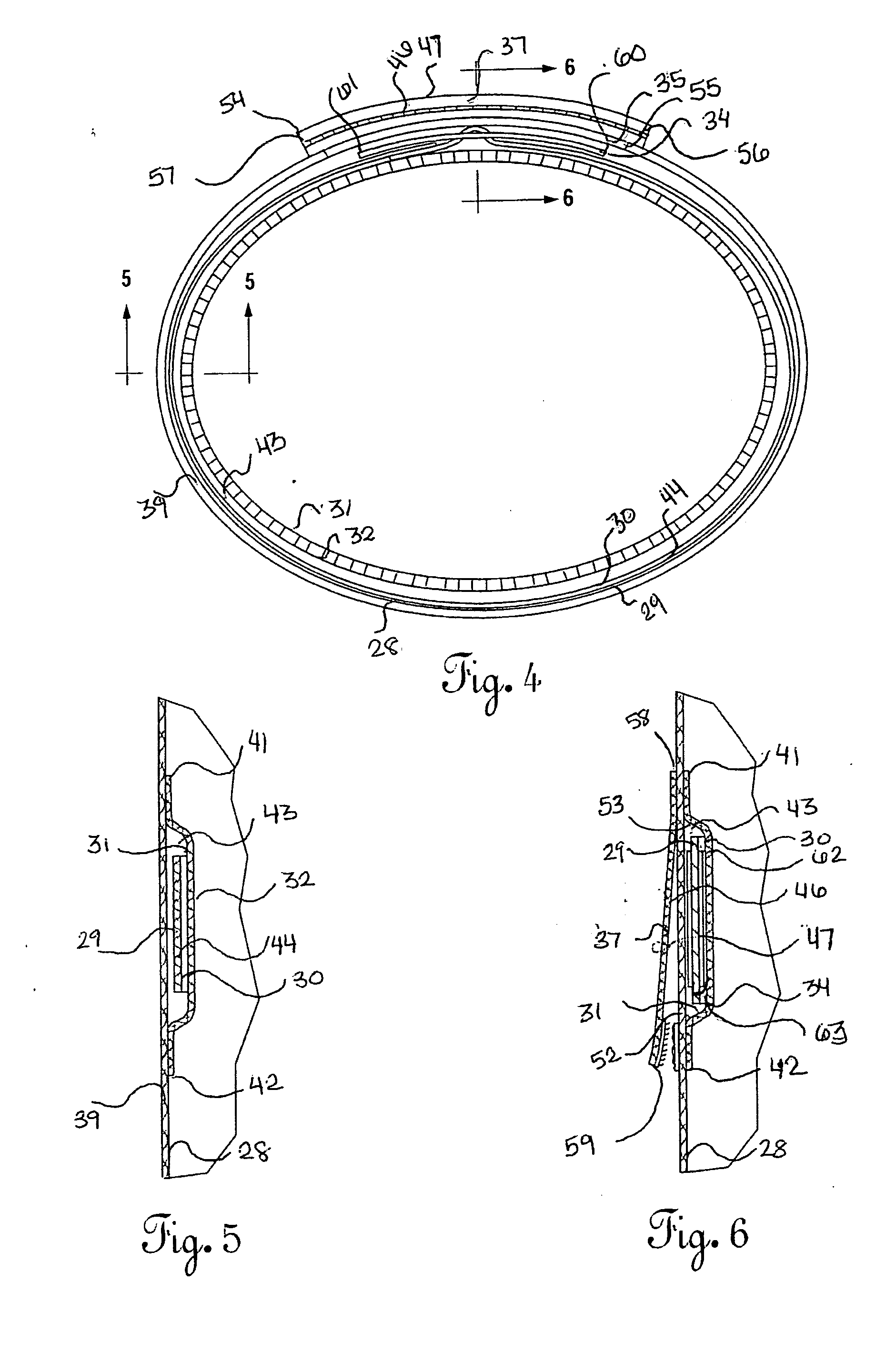Internal tourniquet system
a technology of internal tourniquets and tourniquets, which is applied in the field of wearing apparel, can solve the problems of users being more likely to suffer severe laceration in the extremities, not always available medical care, etc., and achieve the effect of maintaining the smooth appearance of the user's garment, and enhancing the comfort of users
- Summary
- Abstract
- Description
- Claims
- Application Information
AI Technical Summary
Benefits of technology
Problems solved by technology
Method used
Image
Examples
Embodiment Construction
[0028]FIGS. 1 through 10 illustrate particular embodiments of the internal tourniquet system that is the current invention. FIG. 1 depicts the preferred embodiment of the current invention in a garment that comprises a full-sleeved, button-down shirt 1 with exterior surface 48 and two-pocket pants 13 with exterior surface 49. It is understood that the shirt 1 is merely for exemplary purposes and the garment could be of other types depending on the needs of the person in a high risk activity. For instance the garment might take the form of a various garments such as a flight suit, diving or swimming wet suit, battlefield outerwear, fire fighter outerwear or police outerwear.
[0029]The shirt 1 and pants 13 preferably include a total of eight flaps 3,4,5,6,7,8,9,10 for accessing the internal tourniquet system but could include more or less flaps and tourniquets. The flaps are releasable secured to the garment by hook and loop fasters or other suitable quick release connectors. Flaps 3 a...
PUM
 Login to View More
Login to View More Abstract
Description
Claims
Application Information
 Login to View More
Login to View More - R&D
- Intellectual Property
- Life Sciences
- Materials
- Tech Scout
- Unparalleled Data Quality
- Higher Quality Content
- 60% Fewer Hallucinations
Browse by: Latest US Patents, China's latest patents, Technical Efficacy Thesaurus, Application Domain, Technology Topic, Popular Technical Reports.
© 2025 PatSnap. All rights reserved.Legal|Privacy policy|Modern Slavery Act Transparency Statement|Sitemap|About US| Contact US: help@patsnap.com



